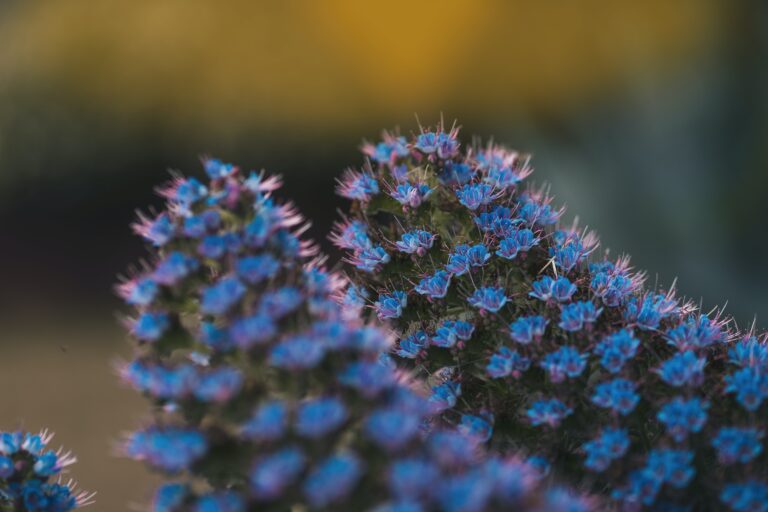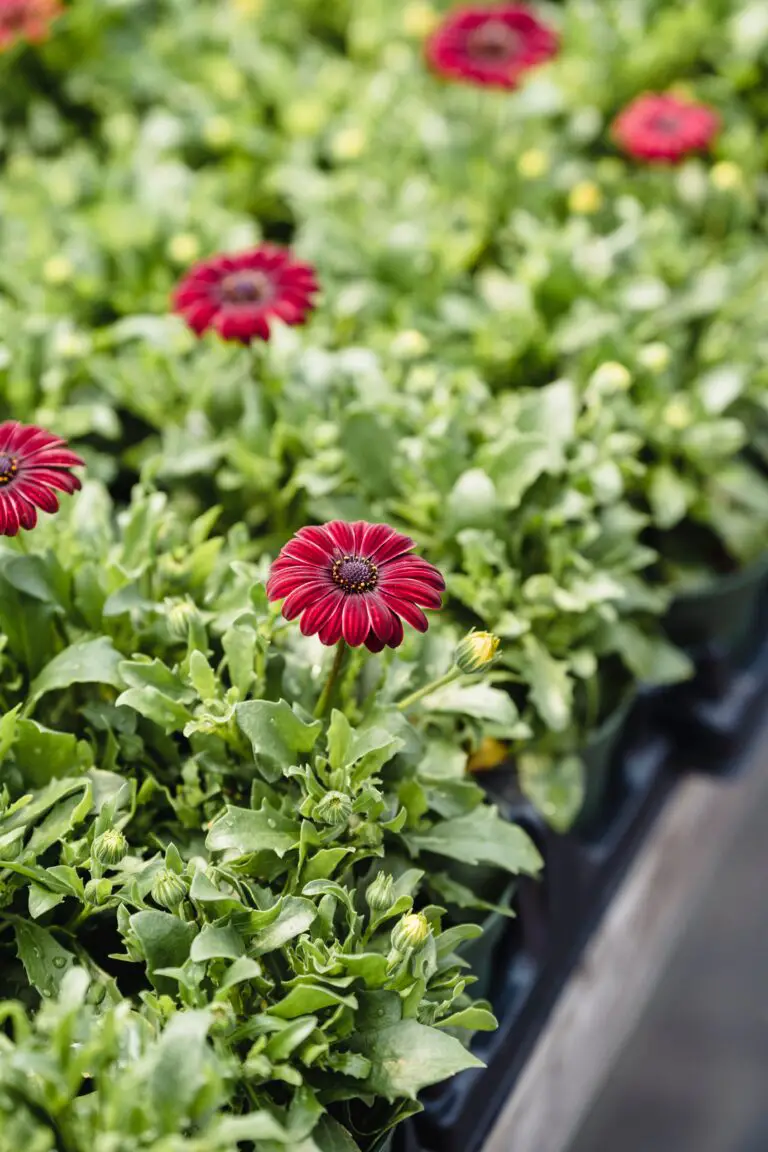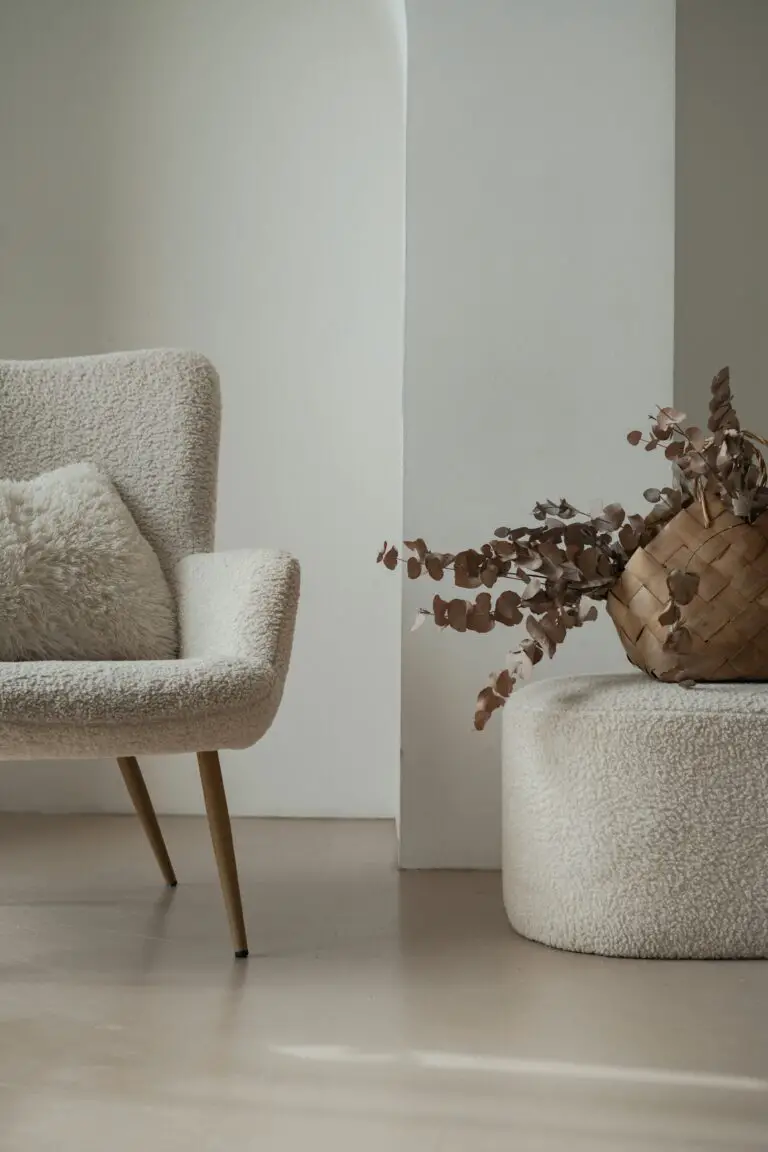Introduction to Senecio Candicans
Imagine a plant so striking that it seems to have descended straight from a celestial garden, its plush leaves shimmering like a silvery waterfall. This is Senecio Candicans, or as it’s fondly known, Angel Wings. Its origin story begins in the rugged landscapes of Patagonia and the Andes, where it thrives amidst intense solar rays and biting cold winds. Like a botanical phoenix, it coats itself with a silvery down, not just for show, but to ward off herbivores and insulate against extreme weather.
Botanically speaking, Senecio Candicans is a marvel of form and function. Each large, rounded leaf, densely clad in fuzzy softness, is a study in survival, reflecting harsh sunlight with its brilliant sheen. Gardeners cherish this plant not only for its ethereal looks but also for the statement it makes within modern garden designs. Contemporary landscapes have begun to adopt Senecio Candicans as a sculptural element, positioned amidst dark foliage for stark contrast or alongside colorful blooms for a touch of whimsy.

The aesthetic value of Senecio Candicans goes beyond its metallic veneer. Aesthetes and purveyors of the surreal find themselves mesmerized by the play of light on its textures, invoking imagery of moonlit nights or wintry frosts. In a tactile world, the urge to reach out and caress its leaves is irresistible, providing a sensory experience unlike any other.
It’s not just about looks, though. This plant isn’t a diva demanding the spotlight without merit; it’s rugged, steadfast, and brings a new dimension to succulent care. It sits unbothered by deer, drought, and high salt concentrations, proving that beauty can indeed be tenacious and resilient. In the art of contemporary gardening, where form meets function under the sun, Senecio Candicans stands tall – a beacon of silver in a sea of green.
Growing Angel Wings: Care Essentials
Embarking on the journey of nurturing the celestial Senecio Candicans, commonly known as Angel Wings, is like sculpting a piece of living silver. Let’s dive into the crux of caring for this ethereal beauty, ensuring your green thumb is as effective as Midas’ touch!
Light: A Luminous Haven
Imagine basking in the soft glow of morning light—Angel Wings relish this scenario. These plants thrive when they get a daily dose of bright, indirect sunshine. However, just like Icarus, too close to the sun and they might wilt! Strike a balance with a spot that’s as bright as a painter’s studio, but shielded from the harsh midday sun, akin to a gently shaded veranda.
Water: The Sipping Schedule
Angel Wings isn’t an aquaholic, it prefers a sip over a gulp. Water when the topsoil feels like a dry savanna—typically every couple of weeks. But remember, much like preparing a perfect martini, it’s all about the right amount: too much water and you’ll drown the roots, leading to a sob story of root rot.
Soil: The Foundation of Life
Just as a castle stands on solid ground, your Angel Wings deserve a sturdy yet breathable foundation. A mix that’s one part peat, one part pine bark, and one part coarse sand works wonders—think the ideal guest list at a gourmet dinner party, where every ingredient complements the others.
Temperature: The Comfort Zone
The Silver Beauty prefers it cool—not cold enough to see your breath but reminiscent of a crisp fall day. Keep the ambient temperature between 65°F and 75°F (18°C – 24°C), as snug as your favorite autumn sweater.
Humidity: The Subtle Mist
Angel Wings needn’t bathe in tropical humidity. They’re more akin to a novelist seeking solace in a serene, moderately humid room. A setting that’s not too dry and not too muggy will have your Angel Wings spreading their leaves in contentment.
Whether you’re a gardening novice or a seasoned horticulturist, this comprehensive guide provides a wealth of knowledge for cultivating a majestic Senecio Candicans that would make any plant enthusiast green with envy.

Exploring Design Possibilities with Senecio
Imagine the silvery sheen of Senecio candicans, also known as Angel Wings, catching the morning light, it’s velvet-like leaves an alluring focal point amidst your garden’s vibrant tapestry. This is the creative journey we embark upon as we delve into designing with one of nature’s most arresting foliages. Whether potted as a standalone piece of living art or woven into the borders of your outdoor sanctuary, Angel Wings offer design versatility that can transform the ordinary into the extraordinary.
Let’s start with container gardening. Picture a sleek, modern pot, its curves accentuating the bold rosettes of silvery foliage. Angel Wings thrive in containers, demanding the attention and elevating the appeal of urban balconies or intimate patio settings. But why stop at one when you can create a chorus of containers, each echoing the elegance of this stunning plant? A contiguous series of pots can lead a visual path to a secluded garden nook or act as a striking divider in a multipurpose outdoor space. Discover more creative container ideas.
Incorporating Angel Wings into your garden borders introduces a textural contrast that can soften the hard lines of traditional landscaping. Picture them lining a walkway, their soft foliage spilling slightly over the edge, whispering for passersby to reach out and touch. Paired with flowering perennials or against a backdrop of sharp-leaved yuccas, Senecio candicans both complements and elevates the garden’s collective beauty.
When it comes to mixed planting designs, Angel Wings truly shines. The key is balancing its statement-making leaves with companions that enhance without overshadowing. Consider low-growing groundcovers that spread a carpet of color at its feet, or vertical accents like grasses that sway gently overhead. By playing with levels, textures, and colors, we weave a living mosaic in our outdoor spaces. For more inspiration on textures and pairing, look at creative arrangements with succulents.

Remember, gardening is not just about planting – it’s about painting with life. Senecio candicans, with its ethereal presence, empowers gardeners to become artists. Whether through the simple act of potting a single specimen or designing an elaborate border display, Angel Wings inspire creativity that thrives long after the initial planting. Every glance out the window, every moment spent in the garden, becomes a testament to the limitless possibilities this mesmerizing plant provides.
Maintenance and Health: Keeping Your Senecio Thriving
Picture this: You’ve just brought home a stunning Senecio candicans, more affectionately known as Angel Wings, and its silvery sheen is casting a glow in your living space. But how do you ensure this celestial beauty keeps its luster and health? Don’t worry, cultivating your Angel Wings to its full glory is within your grasp. Here’s how!
Routine Maintenance
First off, let’s talk daily upkeep. Your Angel Wings will bask in bright, indirect sunlight. Too much direct sun can scorch its leaves while too little will cause it to lacklustre. Watering your Senecio is like a dance – you’ve got to get the rhythm just right. Wait until the top layer of soil is dry to the touch before giving it a drink. Over-watering is a no-go as it can lead to root rot, which is less than angelic.
Our very own Guide to Succulent Soil can be your sidekick for setting the stage. Proper drainage and a well-aerated potting mix are key players. Pruning isn’t a frequent need, but do keep an eye out for any leaves that have become a playground for pests or a canvas for disease – snip these off to keep your Senecio’s energy focused on thriving, not surviving.
Pest Control
Next up on the roster is your defensive strategy against unwanted visitors. Pests such as aphids, mealybugs, and spider mites might be drawn to your Senecio’s soft and tempting foliage. To tackle these tiny troublemakers, introduce natural predators like ladybugs into the mix or apply a neem oil solution for a plant-friendly, chemical-free remedy.
A lively example to consider: Imagine a soft, glistening leaf being speckled with tiny white dots – a clear sign of mealybugs. Acting swiftly with a dab of alcohol on a cotton swab will wipe the slate clean, preserving the health of your plant before the pests can declare victory.
Disease Prevention
Lastly, we mustn’t ignore the silent assailants – disease. Fungal infections can be sneaky, but well-draining soil and proper air circulation will act as an effective barrier. Watch out for powdery mildew or rot – seeing your plant succumb to these is about as fun as a cloud covering the sun on a perfect beach day.
Ensure your Senecio doesn’t sit in soggy soil and try not to let water settle on the leaves. A preventative measure could include a fungicidal spray, but always observe any local guidelines for its use.
So, whether you’re a green-thumbed guru or just starting out, maintaining the majestic beauty of your Senecio candicans is a nurturing journey filled with rewards. And if you’re visual like me, sometimes a demonstration speaks volumes. Take a peek at this handy video for more care tips and watch your Angel Wings soar.
There you have it – with these maintenance and health tips your Senecio candicans will not just grow, but it will glow, making its silver beauty a constant source of joy and tranquility in your home.
Propagation Pro-Tips: Multiplying Your Angel Wings Collection
Unlock the full potential of your Senecio Candicans – the plant that captivates with its ethereal, silvery foliage. It’s a treasure you’ll want to create more of, and propagating your Angel Wings collection can be a fulfilling garden project. Let’s dive into the step-by-step process that will help you create a flourishing oasis of these heavenly silver beauties. Remember, propagation is not just about creating; it’s about understanding the essence of growth.
Choosing the Right Method: Cuttings or Division?
There are two main paths to multiplying your Angel Wings – through cuttings or division. Selecting the right method depends on your plant’s size and your preferences. Cuttings are ideal for when you want to multiply many small plants from a healthy, mature Senecio Candicans. Division, on the other hand, is perfect for when the plant has grown substantially and could use a little space to breathe.
Step 1: Preparing for Propagation
Gather your tools: sharp scissors or a knife, a pot with well-draining soil, and rooting hormone (optional but recommended). Clean your tools to prevent any disease transmission, and let’s get started!
Step 2: Taking Cuttings
For cuttings, snip a healthy piece of stem about 3-4 inches long. Make sure there are a couple of leaf nodes because that’s where new roots will emerge. Strip the lower leaves off and allow the cutting to callous over for a few days, which helps prevent rot when planted.
Step 3: The Division Technique
If you’re dividing, carefully remove the plant from its pot and identify where natural separations in the root ball are. Use a clean, sharp knife to divide the plant into smaller sections, making sure each has a good amount of roots attached.
Step 4: Planting Your Propagated Senecio
Once you have your cuttings or divisions ready, dip the ends in rooting hormone powder to encourage root growth. Plant them in a pot filled with a well-draining soil mix and water lightly. Place the pot in a bright, indirect light area, keeping the soil consistently moist but not soggy.
Seeing Growth: Patience Pays Off
With propagation, patience truly is a virtue. It might take a few weeks before you see signs of new growth, but when you do, it’s a clear signal that your efforts have borne fruit— or rather, borne plants. As you watch your young Angel Wings begin to unfurl their silver leaves, you’ll feel a sense of kinship with these hardy yet delicate plants.
Embedding a visual guide can enhance your understanding even further, and for that purpose, I’ve included an instructive video that will walk you through the joys of propagating Senecio Candicans:
So there you have it, fellow plant enthusiasts – your roadmap to expanding your Senecio Candicans collection. Each step is a milestone in the creation of new life, and with each new Angel Wing plant, you extend the beauty of nature’s artwork in your own living space.
Understanding Senecio of the Same Feather
When diving into the verdant world of Senecios, Senecio candicans, commonly known as Angel Wings, truly stands out with its dazzling silver foliage. However, it’s not alone in its genus. An exploration into the Senecio family reveals a lush tapestry of similarities and striking divergences that captivate the gardener’s eye.
For instance, let’s take the cozy ‘String of Pearls’ (Senecio rowleyanus) and juxtapose it with our sterling star, Senecio candicans. While both exhibit a wondrous knack for indoor plant life and share easy-care habits, they present gardeners with two distinct visual charms. The Angel Wings’ broad, fuzzy leaves shimmer like moonlight against calm waters, in contrast to the playful, bead-like foliage of the String of Pearls, which cascade with grace from their containers.

Another kin, the architectural Pride of Madeira (Senecio candicans ‘Glaucus’), wows with its purple conical blooms that thrust skywards, painting a stark difference to Angel Wings, which forgoes flowers to keep all eyes on its silvery plume. Yet both are a magnet for pollinators, reminding us that beauty does more than just please the eye—it serves a purpose in nature’s grand design.
Our comparative study wouldn’t be complete without paying homage to the classic dusty miller (Senecio cineraria), with its lacy leaves that have edged myriad gardens. While dusty miller has etched its niche in borders and floral arrangements, Senecio candicans is the go-to for that splash of cool silver in modern minimalist designs or for creating enchanting contrasts with vibrantly colored blooms.
What these contrasting characters of the same genus underscore is a valuable lesson in diversity. They challenge gardeners to understand the tapestry of Senecio, pushing boundaries of creativity to apply their unique features. Whether it’s the cascading pearls on a high shelf or the majestic Angel Wings standing tall amongst a sea of green, Senecio species offer gardeners a cosmos of possibilities to make their gardens truly their own. And in this delightful plunge into varied Senecio species, Senecio candicans emerges as a lesson in understated elegance, teaching us that sometimes, it’s not about standing the tallest but shining the brightest.
Warnings and Considerations: Is Senecio Candicans Safe?
Step into the world of plant ownership, and you’ll be greeted with an array of stunning varieties, each with their own character and charm. Among these, the Senecio Candicans, also known as Angel Wings, is a standout with its soft, silvery foliage that seemingly beckons to be touched. But before you give into temptation, let’s delve into a topic as vital as it is often overlooked: the safety of this ethereal beauty.
Although Senecio Candicans could easily be mistaken for an innocuous, delicate plant, it carries with it a hidden sternness, much like a doting parent with a set of ground rules. Behind its delicate facade, this plant is known for its toxic principles. If ingested, it can pose serious health risks to both humans and pets, with symptoms ranging from gastro-intestinal discomfort to more severe reactions depending on the quantity consumed.
Picture this: a curious cat or a playful pup, wandering the perimeters of your living space, stumbles upon the plush leaves of the Senecio Candicans. An innocent nibble here and there, and suddenly, you’re whisked away on an unscheduled trip to the vet. It’s scenarios like these that we must preemptively shield against.

Now, I’m not advocating for you to forgo the joy of having these angelic wings grace your home. Instead, let’s employ a strategy to keep our green companions close, but our four-legged friends closer—under the watchful eye of informed precaution. Elevate plants out of reach, create pet-free zones, or consider alternative, non-toxic plants if you wish not to fret over potential nibbles.
Adorning your living spaces with Senecio Candicans is akin to introducing a stunning piece of art that requires careful handling; a precious commodity to be respected for its aesthetic and inherent nature. With a touch of vigilance and strategic positioning, the Angel Wings can safely coexist with the lively bustle of your household, ensuring peace of mind and a harmonious abode for plant lovers and pet owners alike.
Showcasing Your Angel Wings: Display and Aesthetics
When you bring the effervescent splendor of Senecio Candicans, commonly known as Angel Wings, into your home or garden, you’re not just adding a plant—you’re introducing a standout piece of natural art. Its silvery-white foliage, reminiscent of a frosted wonderland, demands attention and a thoughtful display. Let’s dive into some creative ways to make your Angel Wings the centrepiece of any setting.
The key to showcasing Senecio Candicans is finding a balance that highlights its unique texture and color without overwhelming the surrounding decor. Indoors, consider a minimalist approach; a single, potted Angel Wings on a wooden stool or a hanging planter near a north-facing window crafts an air of understated elegance. Sunlight dances on its silver leaves, creating a luminous effect that breathes life into a neutral-colored room.

Outdoor presentations can be equally captivating. Nestle your Angel Wings among a rock garden and watch as it becomes a living sculpture amongst the stones. Partnered with dark-leaved companions like heuchera or purple fountain grass, its silver foliage pops—providing a dramatic contrast that makes both plants shine. In a sea of greenery, a strategically placed Senecio Candicans is like a beacon; mesmerizing and impossible to ignore.
For those with a flair for the dramatic, why not use Angel Wings in a seasonal display? Picture a rustic wheelbarrow in autumn, brimming with pumpkins, fiery-colored mums, and the serene presence of Angel Wings at its heart. Come winter, a container arrangement on the porch, brought alive with twinkling fairy lights and frost-touched leaves of Senecio Candicans, sets a magical scene reflective of the season’s charm.
Remember, Senecio Candicans isn’t just another plant; it’s a statement. Whether you’re looking to add a touch of whimsy to your balcony or curating an inviting corner in your living space, let Angel Wings take flight and transform the ordinary into something breathtakingly beautiful. Now, it’s your turn to get creative and let this silver beauty inspire your next aesthetic adventure!
Caring for Senecio Candicans in Winter
When the temperature drops and the days shorten, gardeners tuck their tender plants in for a long winter’s nap. But what about our frosty friend, Senecio candicans, also known as Angel Wings? Does it require special tlc? Absolutely, and we’re here to share the deets on winterizing this celestial beauty!
First things first, Angel Wings is hardy, but everyone has their limits. If the mercury dips below 30°F, it’s time to whisk your Senecio indoors or provide some kind of shelter outside. No one wants frostbite, not even plants! An unheated garage or basement with a window can be a winter haven for these silvery specimens. Just make sure they get some light; they don’t require much, but total darkness is a no-go.
Winter Watering Woes
Remember, folks, overwatering is the fast track to plant parenthood failure. During winter, Angel Wings goes into power-saving mode. It needs less H2O, so let the soil dry out between waterings. Think of it like a bear hibernating. No bear chows down on a feast mid-slumber, right? Similarly, your Senecio candicans isn’t exactly thirsty when it’s chilling (pun intended).
Whipping Winds and Senecio
Imagine this—brisk winter winds attempting to steal your warmth as you snuggle under a blanket. Your Angel Wings feel the same! Drafts can be just as thievish with plants. A tip? Position them somewhere shielded from cold drafts and gusts. Happy plants, happy life.
Now, let’s take a moment to witness how someone cast a protective charm over their Senecio candicans against the winter spells. Check out this video for some visual learning!
Lastly, let’s talk about the cozy cover. For the outdoor Angel Wings, consider using a frost cloth or even straw mulch to add a layer of protection. It’s like tucking them in with a warm blanket. And who doesn’t love that snug feeling?
In conclusion, tending to your Senecio candicans during the winter isn’t much of a hassle. With the right love and care, you’ll keep your Angel Wings in tip-top shape till spring comes skipping back around. So bundle up, both you and your botanical buddy, and enjoy the winter wonderland!
Frequently Asked Questions
Ever wondered if the silvery foliage of Senecio Candicans, also known as ‘Angel Wings,’ needs special sunscreen against the sizzling summer sun? Jokes aside, let’s dive deep into the shimmering world of this plant with some real talk and practical advice.

How Do I Keep My Senecio Candicans Thriving?
Imagine your Angel Wings as the cool kid on the block, loving a sunny spot with well-drained soil – they’re all about that laid-back beach vibe. Water them like you’re concocting a delicate cocktail; enough to quench their thirst, but not so much that they’re swimming in it. Think ‘moisture moderation.’
Warding Off Unwelcome Guests: Pest Management
Is your Senecio Candicans playing host to unwelcome insect parties? Let’s crash their bash! Neem oil can be your bouncer, keeping pests like aphids and mealybugs at bay. And remember, overwatering is like sending out an open invite for root rot to join the soiree—just say no.
Pruning: When and How?
Let’s talk haircuts but for your plant. Pruning isn’t just to keep your foliage fashionably chic; it’s about health too. Trim back the overachievers and the underperformers in early spring, to encourage fresh, vibrant growth. Use clean, sharp scissors for a cut as precise as a sushi chef’s.
Propagation: More Angel Wings, Please!
Want to spread the love? Propagation’s the way. It’s as easy as taking a leaf cutting, letting it callous over like a seasoned adventurer’s scar for a day or two, and then gently planting it in a new pot. Patience, young grasshopper, and soon you’ll have an army of Angel Wings.
The Perfect Potting Mix?
Like a gourmet meal, the right potting mix can make or break your Senecio Candicans experience. Whip up a blend of peat, perlite, and a hint of compost for a Michelin-star worthy substrate. Your plant’s roots will gobble it up!
Flying Solo or in a Squadron: Companion Planting
Angel Wings tend to be solitary stars, but if you want a squadron, pair them with plants that share their thirst and sun preferences. Lavender and rosemary can be their wingmen, creating a garden that’s a sensory delight.
With these tips, your Senecio Candicans will be more than just another pretty face in your garden—it’ll be the silver sensation that keeps the neighbors talking!



